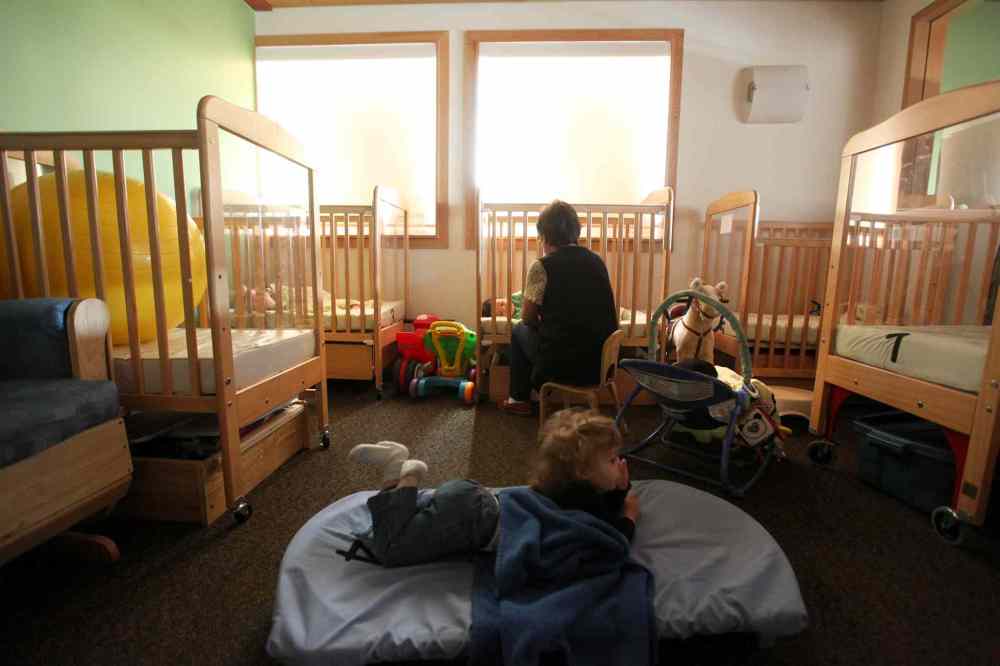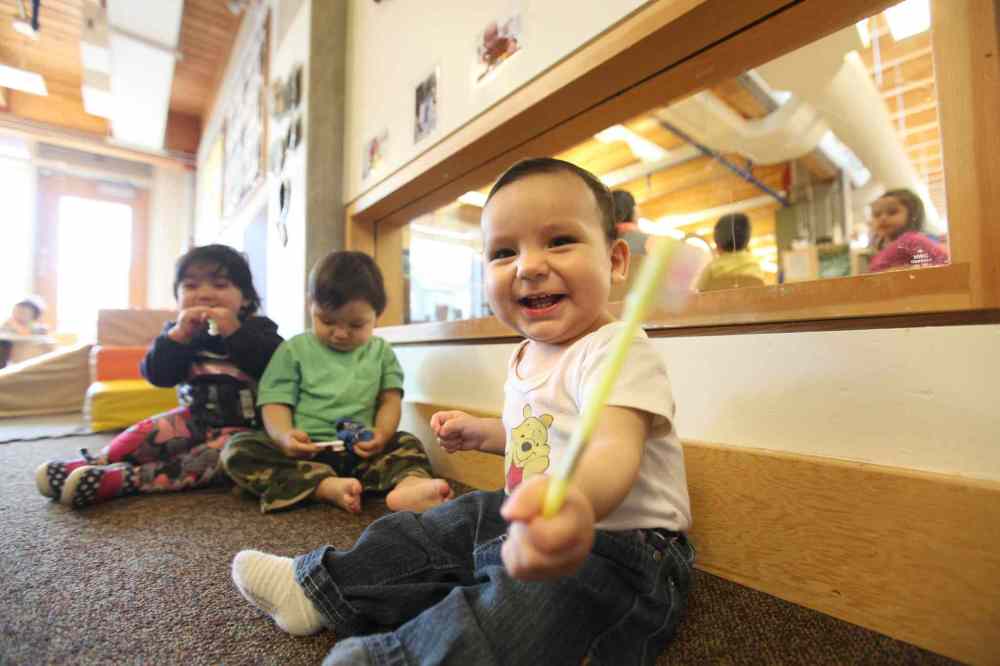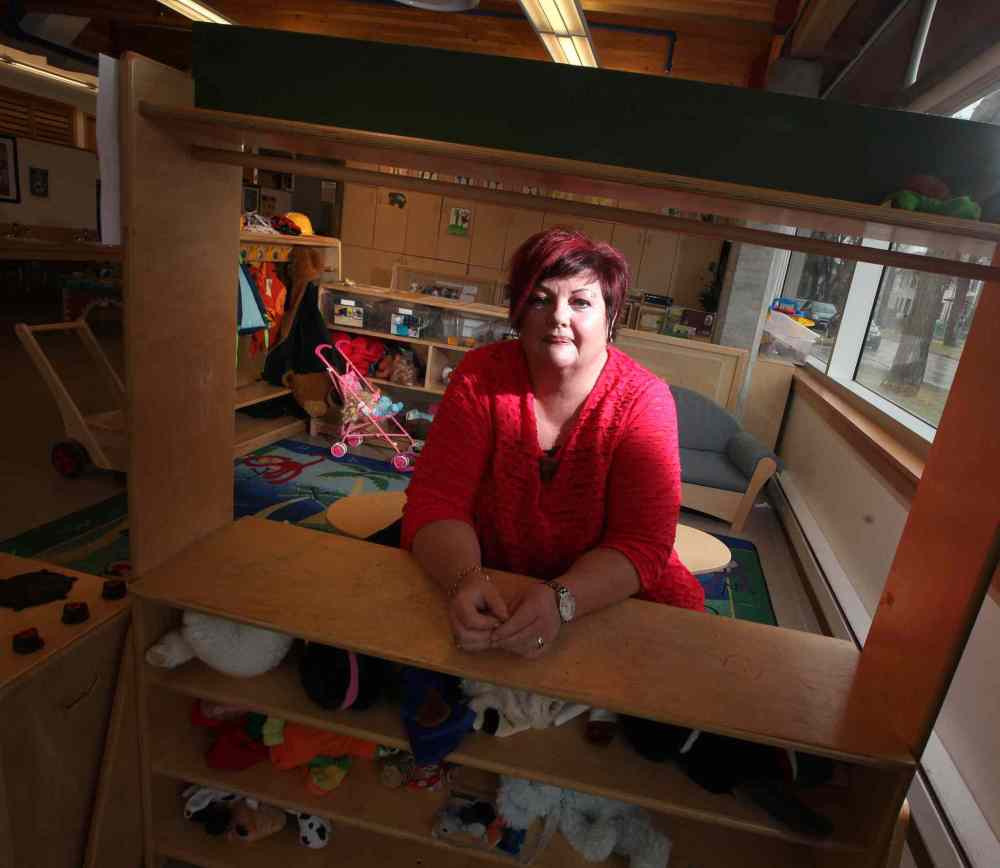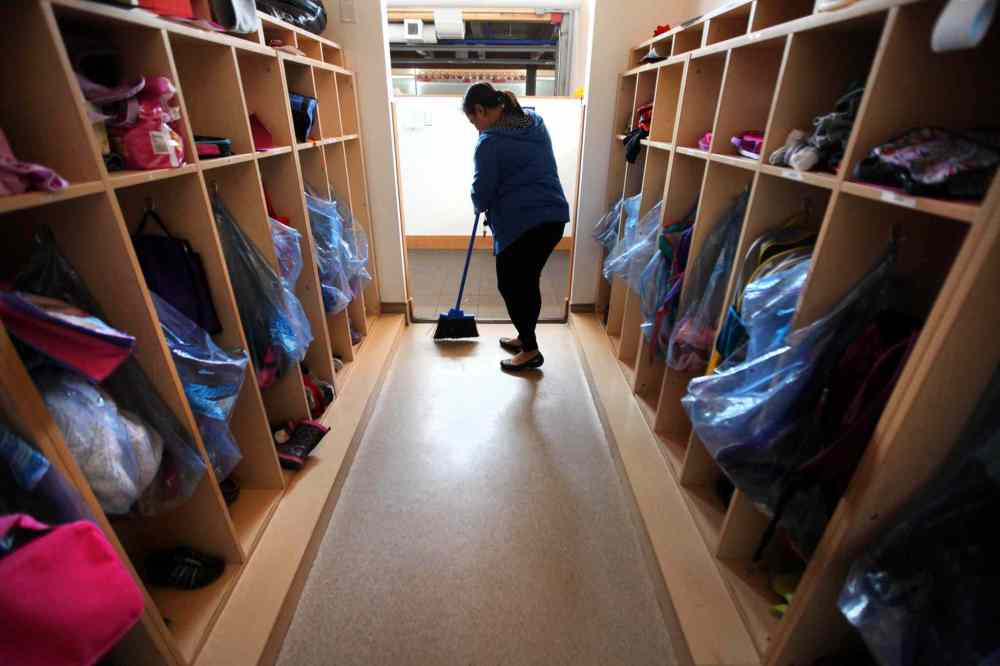The daycare divide
Finding quality care is a challenge, but most notably in the city’s poorest areas
Advertisement
Read this article for free:
or
Already have an account? Log in here »
To continue reading, please subscribe:
Monthly Digital Subscription
$0 for the first 4 weeks*
- Enjoy unlimited reading on winnipegfreepress.com
- Read the E-Edition, our digital replica newspaper
- Access News Break, our award-winning app
- Play interactive puzzles
*No charge for 4 weeks then price increases to the regular rate of $19.00 plus GST every four weeks. Offer available to new and qualified returning subscribers only. Cancel any time.
Monthly Digital Subscription
$4.75/week*
- Enjoy unlimited reading on winnipegfreepress.com
- Read the E-Edition, our digital replica newspaper
- Access News Break, our award-winning app
- Play interactive puzzles
*Billed as $19 plus GST every four weeks. Cancel any time.
To continue reading, please subscribe:
Add Free Press access to your Brandon Sun subscription for only an additional
$1 for the first 4 weeks*
*Your next subscription payment will increase by $1.00 and you will be charged $16.99 plus GST for four weeks. After four weeks, your payment will increase to $23.99 plus GST every four weeks.
Read unlimited articles for free today:
or
Already have an account? Log in here »
Hey there, time traveller!
This article was published 02/05/2015 (3861 days ago), so information in it may no longer be current.
Few parents in River Heights or St. James or Fort Rouge would say they had an easy time finding daycare. Parental horror stories abound of new mothers delaying their return to work, cadging care off grandparents or ever-so-casually dropping by their local daycare with plates of cookies, hoping to gently bribe their way into a spot.

But as bad as the daycare shortage is in those middle-class neighbourhoods, it’s nothing compared to the pinch in poor ones.
“I have people crying at my doorstep all the time,” said Wanda Bruenig, executive director of Freight House’s three inner-city daycare locations. “They are so desperate for child care.”
There are far fewer daycare spaces for poor kids in Winnipeg, even though experts say really great early childhood education can halt the kind of entrenched poverty passed down from generation to generation and catapult kids forward in school.
And the gap between rich and poor neighbourhoods isn’t getting better. In many wards, it’s getting worse.
A decade ago, nearly a quarter of all kids in St. James and River Heights had access to daycare — a frustratingly low number for parents scrambling for a space. But in Elmwood and Mynarski, there were only enough daycare spots for 12 per cent of kids.
That’s according to data contained in a report released in 2004 by local child-care advocates called Time for Action: An Economic and Social Analysis of Child Care in Winnipeg. Among other things, that report mapped daycare rates by city ward.
Using data from the provincial government’s child-care branch and Statistics Canada’s latest census, the Free Press crunched the number again, to see what’s changed in 10 years.
Lots in wealthier wards. Not as much in poor ones.
Ten years ago, roughly 17 per cent of kids in Winnipeg had access to a daycare space. That figure is known as the coverage rate. Now, after a decade of multimillion-dollar funding increases by the provincial government, that figure is about 23 per cent — a decent citywide bump that masks growing inequality.
A decade later, roughly 40 per cent of kids in St. James and River Heights have access to daycare. Fort Rouge-East Fort Garry also doesn’t fare badly. About a third of kids there have daycare.
But in Elmwood, which has actually seen nearly 400 new spaces created in the last decade, the coverage rate is still half that of River Heights. Point Douglas is even worse, with a coverage rate of just 18 per cent and a growth rate that’s about a third of the city’s.
Another outlier: Old Kildonan. It’s a largely middle-class ward, home to many new Canadians. Ten years ago, it had the worst coverage rate in the city, and still does.
“I think it’s so hard to find good child care that parents are resorting to horrible care,” said Robin Potter, a longtime staff member at SPLASH Child Care, which has two locations in the heart of the North End. “They call us in a panic. First, it’s a year out, then every month, then every week — ‘How’s it going, how’s it going?’ The parents who get in are the ones who can advocate for themselves.”
That’s despite the fact that an emerging body of research suggests early childhood education — everything from parenting programs to a really good nursery school — can nearly cure generational poverty.
The brains of babies and toddlers develop at a remarkable rate — 700 new neural connections per second in a healthy, engaged environment. Fledgling research suggests poor kids in early childhood programs stay in school longer, get better-paying jobs and are less likely to get involved in crime.

On the flip side, the daily stress of an abusive home, chronic neglect or a struggling parent creates a permanent state of fight-or-flight. If a child starts life in a chaotic or dangerous environment, the stress response becomes almost permanent, overloading the developing brain and shrinking the number and strength of neural connections, according to research compiled by Harvard University’s Center on the Developing Child.
Brains don’t develop all the character traits needed for a successful life, such as self-control, persistence, the ability to plan and make social connections. A terrific team of early childhood educators in an innovative daycare can’t totally compensate for that, but they can certainly help.
The daycare disparity is no surprise to Bruenig, whose wait list for Freight House’s preschool program alone is 523 deep. More and more, as Manitoba ramps up immigration, Freight House is seeing an influx of kids new to Canada, whose parents need child care while they attend school, upgrade their credentials or work several jobs, often at odd hours.
When the new IRCOM (Immigration and Refugee Community Organization of Manitoba) House apartment block opens across the street from Freight House later this year, the area could see dozens more daycare-aged children in the area who need care.
And, said Bruenig, the daycare crunch isn’t just about money. Desperate parents often pay a private, unlicensed child-minder much more than the provincially regulated day rate just because no licensed spaces are available.
No neighbourhood has enough daycare, and Winnipeg is nowhere close to the 50 per cent coverage rate the Child Care Coalition of Manitoba recommends. Citywide, we’re at about 23 per cent, which means one child in five has access to a licensed daycare space.
Below, three more perspectives on the daycare disparity.
The Parent
After a rough start in life, Mary Burton’s grandson Jesse didn’t talk much, and a revolving door of babysitters wasn’t helping the toddler.
Now, after nearly two years at the North End’s SPLASH Child Care facility, the four-year-old is a new kid.
“The play, the communication, the gentleness of the staff… He talks constantly now,” Burton said. “He’s got his ABCs, he’s learning to share, his motor skills have improved….”

SPLASH was where Burton send her own kids when they were young. When she began caring for her grandsons, she got on the waiting list right away, but it took a year-and-a-half for Burton, one of the North End’s veteran community advocates and no shrinking violet, to secure spots.
In the meantime, Burton and her husband, who worked nights, spent months trying to finagle stop-gap babysitters who would often fall through or cancel and who just weren’t providing quality care. Burton spent a lot of work time calling to check on her grandsons and was almost at the point where she or her husband needed to quit one job and stay home full-time.
“I cannot stress how much of a burden it takes off, knowing you’ve got good child care,” she said.
But Burton said the barriers to North End parents are many. They don’t have regular Internet access so it’s difficult to keep up with the online waiting lists.
The province’s subsidy rate is quite low. As soon as a single mother takes home, after taxes, more than about $16,000 a year, she no longer qualifies for a full subsidy.
At about $28,900, she no longer qualifies for even a partial grant. The full cost of daycare kicks in, often $600 or $700 a month.
And, it’s just hard to find a space, let alone one as good as SPLASH.
“They just need to make more,” she said simply. (Read more on sinking subsidies below)
The Boss
“Mess creates stress,” declares Lesley Massey as she points to a long wall of cupboards where daycare staff are stashing toys.
It’s hard to create a sense of zen-like calm in a daycare where 48 toddlers are squealing at giant puzzles on the floor, splashing bubbles in the water table, giggling at a visitor’s Big Bird yellow tights or trying to escape from a diaper change.
But the SPLASH daycare on McGregor Street in the heart of the North End has an almost minimalist, Scandinavian feel, with lots of white walls and blond wood and not much clutter. The bright colours and piles of plastic toys common in many child-care centres are notably absent from SPLASH, in part because a calmer atmosphere with fewer distractions makes life a little easier for kids with special challenges, including fetal alcohol spectrum disorder.

More than 85 per cent of the centre’s kids are fully subsidized, and many need a little extra attention. So, staff spend a lot of time doing more — everything from extra hugs to negotiating with child welfare agencies to helping schools line up specialized services to grappling with subsidy paperwork.
And, they try to be a stable place for kids who might be in and out of foster homes at the other end of town, on the move from one crappy apartment to another, one school to another, one relative to another. Staff spend a lot of time cajoling social workers, parents and foster families to keep kids in SPLASH no mater what.
“They move and move and move. Once you pull a child out of daycare, good luck with that,” said Massey, the executive director of SPLASH’s two North End locations. “If everything else is going crazy, at least we can be the constant. We make that our mission.”
SPLASH’s newest location is in the same building as the new North End YMCA-YWCA and the Ma Mawi Wi Chi Itata Centre, which has a handful of crisis spots in the daycare for parents in Ma Mawi’s programs. Those crisis spots are always full.
Another thing Massey has to deal with that most daycares in middle class neighbourhoods don’t: Bad debts. Even a single mom on a full subsidy, whose net income is lower than $16,000, must pay $2 a day for child care. Last year, the centre had about $6,000 in bad debts from parents who couldn’t find the cash.
What Massey does have in common with daycare directors across the city are the weekly calls and visits from desperate parents, though the stakes are higher for a mother living on welfare than one in a two-income home.
“I feel very sad for the parents who come in and say “look, I could get into this program, or I could get off assistance if I could just find child care,” Massey said.
SPLASH has a total of 486 kids on its waiting list.
The Expert
Manitoba’s child-care system sets poor neighbourhoods up to fail, says one of the province’s top daycare researchers.
That system relies almost totally on volunteer parents willing and able to do the grunt work needed to open a daycare. Such parents are hard to find in a wealthy neighbourhood, and ever scarcer in poor ones.

“This is a structural phenomenon,” said Susan Prentice, sociology professor at the University of Manitoba and one of the authors of the 2004 Time for Change report. “It’s not an accident. It’s built in to the way Manitoba relies on the voluntary sector.”
The Manitoba government doesn’t open daycares. It doesn’t even incubate new centres and then turn them over to parent boards to run. Instead, says Prentice, the province is entirely reactive, waiting for a desperate gaggle of parents or a non-profit agency to open a new centre.
Over the last couple of decades, those parents and community groups have helped make Manitoba the best jurisdiction for child care outside of Quebec, with among the best quality.
But it takes up to three years to open a new daycare. It means setting up a non-profit board, finding space, finding capital funding and renovating it so it meets all the strict building code rules, getting all the city permit, hiring scarce staff, co-ordinating with local school or community groups.
“It’s a very complex thing. It takes a lot of skills and connections and confidence and time,” said Prentice.
It’s tough for professional River Heights parents to do, let alone low-income parents with a lot of other, more pressing worries. In sociology terms, that’s known as an uneven distribution of social capital.
That inequality has spawned an unequal distribution of daycares across the city.
In the last decade, 32 new daycares have opened in Winnipeg. Middle-class neighbourhoods such as St. Norbert got 14 new home and centre-based daycares, and Transcona got 16. Meanwhile, the Daniel McIntyre ward lost 17 daycares, and Elmwood didn’t fare much better.
Sinking subsidies
Far fewer poor kids are qualifying for daycare subsidies and the province says it’s because rich families are snapping up all the daycare spaces.
Fifteen years ago, when Manitoba’s publicly funded daycare system was much smaller, about 11,000 kids qualified for full subsidies, nearly half of all kids in regulated daycare.

Now, only 8,600 poor kids qualify for aid. The number of spaces has increased dramatically in 15 years so only a quarter of kids in daycare are subsidized.
Though the province’s child poverty rate has remained the second highest in Canada, the province says a stable economy and low unemployment accounts for the shrinking number of subsidized kids.
“Additionally, with significant growth in the number of child care spaces since 1999, increased numbers of middle income families are using the licensed system,” said the province in a statement.
Several child-care directors and advocates say it’s very difficult for a family to qualify for aid, and only the poorest of the poor fall below the program’s threshold. A single mother with one child must take home less than $16,420 a year after taxes to qualify, a salary that works out to below minimum wage. Parents also still pay $2 a day for care.
University of Manitoba child care expert Susan Prentice notes the Filmon government capped the number of child-care subsidies at 9,600. At the time, child-care advocates and the NDP balked at the Conservative government’s stingy subsidy program, but in 1993 the Filmon Tories help 1,000 more poor children than the NDP did last year.
maryagnes.welch@freepress.mb.ca, inayat.singh@freepress.mb.ca
History
Updated on Monday, May 4, 2015 3:42 PM CDT: Adds more detail to subsidy section.

